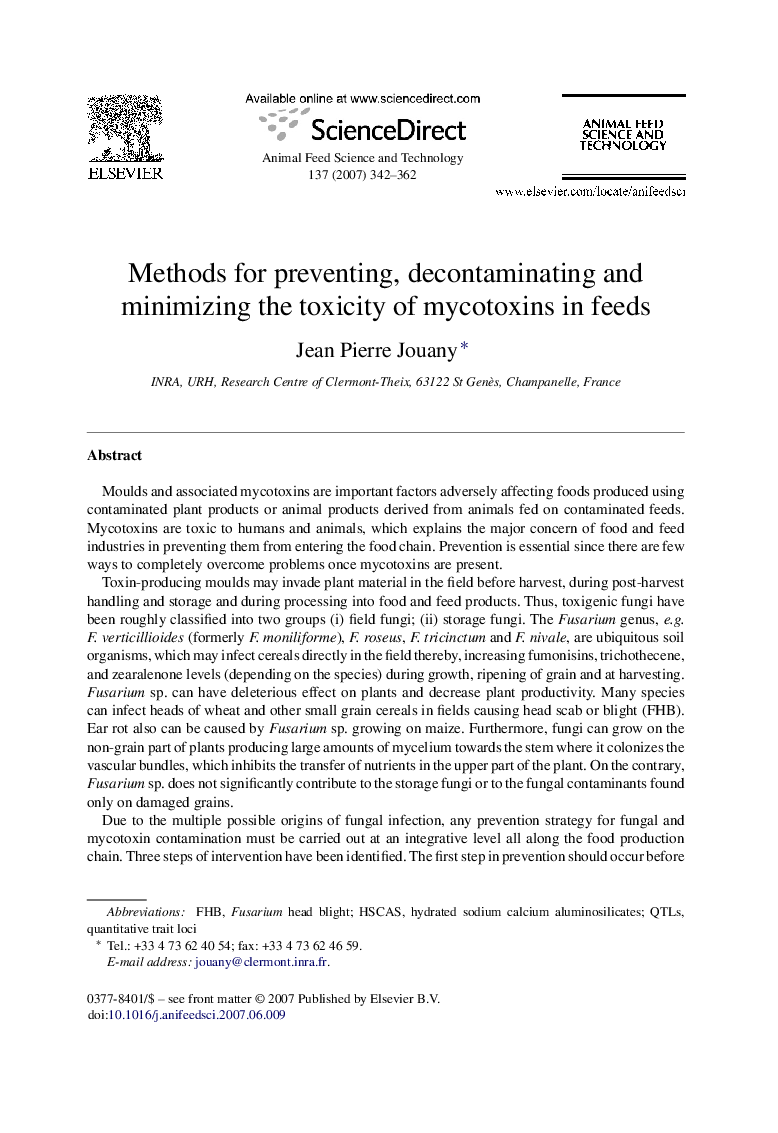| کد مقاله | کد نشریه | سال انتشار | مقاله انگلیسی | نسخه تمام متن |
|---|---|---|---|---|
| 2420967 | 1552480 | 2007 | 21 صفحه PDF | دانلود رایگان |

Moulds and associated mycotoxins are important factors adversely affecting foods produced using contaminated plant products or animal products derived from animals fed on contaminated feeds. Mycotoxins are toxic to humans and animals, which explains the major concern of food and feed industries in preventing them from entering the food chain. Prevention is essential since there are few ways to completely overcome problems once mycotoxins are present.Toxin-producing moulds may invade plant material in the field before harvest, during post-harvest handling and storage and during processing into food and feed products. Thus, toxigenic fungi have been roughly classified into two groups (i) field fungi; (ii) storage fungi. The Fusarium genus, e.g.F. verticillioides (formerly F. moniliforme), F. roseus, F. tricinctum and F. nivale, are ubiquitous soil organisms, which may infect cereals directly in the field thereby, increasing fumonisins, trichothecene, and zearalenone levels (depending on the species) during growth, ripening of grain and at harvesting. Fusarium sp. can have deleterious effect on plants and decrease plant productivity. Many species can infect heads of wheat and other small grain cereals in fields causing head scab or blight (FHB). Ear rot also can be caused by Fusarium sp. growing on maize. Furthermore, fungi can grow on the non-grain part of plants producing large amounts of mycelium towards the stem where it colonizes the vascular bundles, which inhibits the transfer of nutrients in the upper part of the plant. On the contrary, Fusarium sp. does not significantly contribute to the storage fungi or to the fungal contaminants found only on damaged grains.Due to the multiple possible origins of fungal infection, any prevention strategy for fungal and mycotoxin contamination must be carried out at an integrative level all along the food production chain. Three steps of intervention have been identified. The first step in prevention should occur before any fungal infestation; the second step is during the period of fungal invasion of plant material and mycotoxin production; the third step is initiated when the agricultural products have been identified as heavily contaminated. Such hazard analysis has some similarity with the HACCP management system of food safety [Degirmencioglu N., Esecali H., Cokal Y., Bilgic M., 2005. From safety feed to safety food: the application of HACCP in mycotoxin control. Arch. Zootech. 8, 19–32], mainly with the principles 2 (Determination of critical control points) and 3 (Establish critical limits). Most of the efforts must be concentrated on the two first steps since, once mycotoxins are present, it is difficult to eliminate them in a practical way.
Journal: Animal Feed Science and Technology - Volume 137, Issues 3–4, 1 October 2007, Pages 342–362